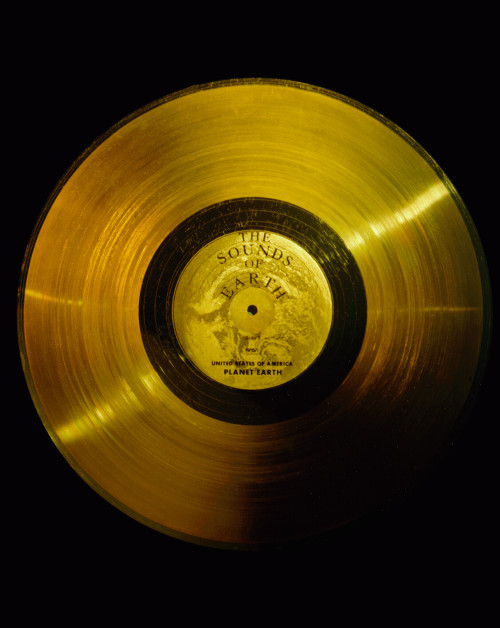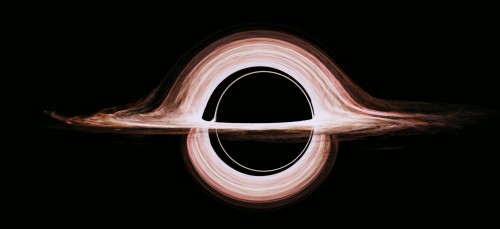Tag archives: film
Frightening physics films, a furry physics doodle and an epic pub crawl
By Hamish Johnston
There are still 10 days to go until Halloween, but some physicists can’t resist getting into the spirit a bit early. Over at Symmetry, Kathryn Jepsen suggests a few scary physics films that would make for a spooky movie night on 31 October. They’re not actually real films, but rather a series of posters dreamt up at Chicago’s Sandbox Studio in collaboration with the illustrator Ana Kova. My favourite is Poltergauss (right), because trying to understand magnetism is terrifying.
View all posts by this author | View this author's profile
Music for aliens, Doctor Strange’s science adviser, the physics of Bob Dylan

Sounds of Earth: An original golden record. (Courtesy: NASA)
By Hamish Johnston
An online initiative to reissue Carl Sagan’s golden record, which was attached to NASA’s Voyager 1 and 2 craft, has so far raised a whopping $1.1m, smashing its $198,000 goal. The campaign was created in September by David Pescovitz, editor and managing partner at the technology news site Boing Boing, after teaming up with Timothy Daly from Amoeba Music in the US, who was the original producer of the record, as well as US graphic designer Lawrence Azerrad. The original LP, which was created in 1977, contains sounds of the Earth along with recorded greetings and a mix of music, and has been unobtainable for decades, having been available only on CD-ROM in the early 1990s. Now that the cash has been raised, the golden record will be released next year as an LP to mark the 40th anniversary of the Voyager launches. So how much will it set you back? It’s yours for only $98, what a bargain.
View all posts by this author | View this author's profile
The physics of Luke Cage’s skin, meet the ‘mathekniticians’, lessons from the only girl in a physics class
By Hamish Johnston
Marvel’s Luke Cage is a superhero television series that has just debuted on Netflix. Cage’s superpower is that his skin is impervious to bullets and other projectiles fired at him by villains. But could it be possible to create a skin-like layer that would allow someone to emerge unscathed from machine gun fire? The Nerdist’s Kyle Hill has the answer in the above video.
View all posts by this author | View this author's profile
Capturing your research on film

TPDL 2016 took place at the grand Hannover Congress Centrum.
Communicating science through video was the theme of a workshop I participated in yesterday in Hannover, Germany, as part of the Theory and Practice of Digital Libraries conference (TPDL 2016). It was a varied audience that included journalists, academics and librarians. I came away feeling inspired by all the possibilities, but realizing that science communication has a long way to go to use this medium to its full potential. I’ll share with you here some of the key messages.
As Physics World’s multimedia editor, I used my slot to talk about some of the journalistic videos I’ve produced and commissioned during the past few years – discussing what’s worked, what hasn’t and where I think journalistic video production is heading. I made the point that to create engaging web video you have to think carefully about how your audience will be watching the films. Your film may look great on a large monitor, but will it be enjoyed by someone watching it on a smartphone on a bus or train? Also, what are you trying to achieve with the film? Are you trying to entertain or promote something? Or perhaps you are trying to teach? The style and tone will vary depending on the purpose.
View all posts by this author | View this author's profile
Pokémon physics, photon torpedoes, a neutrino Ghostbuster and more

Don’t walk into the water! Pokémon Go arrives at Fermilab. (Courtesy: Lauren Biron/Fermilab)
By Michael Banks and Hamish Johnston
The smartphone app Pokémon GO has been all the rage since its recent launch. The augmented-reality game is based on the Nintendo franchise and features players exploring their surroundings while trying to catch as many of the virtual creatures as possible, According to Science, Pokémon have been spotted at a number of science centres including NASA’s Jet Propulsion Laboratory while Symmetry Magazine reports that the game has also infiltrated particle-physics labs such as Fermilab, with scientists seen walking around the lab peering into their phone as they hunt down Pokémon.
View all posts by this author | View this author's profile
From physics degree to Hollywood
By James Dacey
This summer many of you will watch smoke billowing out of buildings as yet another villain wreaks havoc on the New York skyline in the latest Hollywood blockbuster. I’m willing to bet that as you eat your popcorn you won’t be thinking about the Navier–Stokes equations of fluid dynamics. (Well, perhaps you will now that I’ve mentioned it!)
In fact, part of the reason that virtual smoke in films looks so realistic is because visual effects (VFX) specialists have applied the Navier–Stokes equations to their graphics. This was one of the interesting tidbits I learned from a talk yesterday in London by Rob Pieké, head of software at Moving Picture Company (MPC).
Pieké was speaking as part of a half-day event on “physics and film” organized by the Institute of Physics, which publishes Physics World. The gist of his presentation was that basic physics principles are used in a variety of ways to create special effects that capture viewers’ attention. “The audience wants to see something fantastical but grounded in reality,” said Pieké. Another example he gave was how naturally bouncing hair in computer-generated characters is modelled on mass—spring systems. Each individual hair could be modelled on as many as 30 masses connecting by springs.
View all posts by this author | View this author's profile
Space Station vacancy, lead balloons on the fly and more
By Michael Banks and Tushna Commissariat
You may remember that the “classical crossover” soprano star Sarah Brightman had been undergoing strenuous training at Moscow’s Star City complex before hitching a ride on a Soyuz rocket to the International Space Station (ISS) in September. The singer was set to pay a whopping £30m for a ticket that would have seen her embark on a 10-day journey into space. Brightman even recorded a special song in March that she was planned to perform on the ISS itself – you can watch the 5 News report above. But Brightman has now postponed the trip, putting out a brief statement on her website citing “personal family reasons” for the decision. One beneficiary of Brightman’s no-show will be the Japanese entrepreneur Satoshi Takamatsu, who had been training as Brightman’s back-up. Whether he’ll do his own version of her planned performance isn’t clear.
View all posts by this author | View this author's profile
Science cleans up at the Oscars

The Theory of Everything depicts Stephen Hawking’s relationship with first wife Jane. (Courtesy: Universal Pictures International)
By Tushna Commissariat
In a sweeping win for science-themed films at this year’s Oscars, British actor Eddie Redmayne has won the best actor award for his portrayal of the theoretical physicist Stephen Hawking in the film The Theory of Everything. Redmayne, 33, plays Hawking in the biographical film that was inspired by the memoir Travelling to Infinity: My Life with Stephen written by Hawking’s former wife Jane, who is portrayed in the film by the British actress Felicity Jones. The Theory of Everything was also nominated for best picture, original score and adapted screenplay, while Jones was nominated in the best actress category. Redmayne’s success at the Oscars comes after his win in the best actor category at this year’s Bafta awards, which also saw The Theory of Everything pick up best film. The movie chronicles Jane’s relationship with Hawking – from the early days of their courtship to Hawking’s diagnosis of amyotrophic lateral sclerosis at the age of 21 and his success in physics until the two divorced in 1995. I was lucky enough to attend an early screening of the film, and I thought it was a very worthy candidate for the awards season. You can read my review of the film here.
View all posts by this author | View this author's profile
Oscar-nominated physics, putting the jump into popping corn and more
By Tushna Commissariat
There is nothing quite like a bowl of hot, buttery popcorn – and it seems as if even physicists are enthralled by it as they dig into the pops and jumps of this tasty snack. A recent article in the New York Times caught our attention this week, as it talked about how a French research duo used high-speed video cameras and a hot plate to see just why a kernel of corn not only pops, but also leaps up as it puffs. The team found that as the kernel’s hull is breached, we hear the popping sound and this is swiftly followed by the jump that happens when a puffy bit of the inside pushes out and makes the corn jump, a bit like a muscle twitch. Take a look at the lovely slow-motion video above of individual kernels leaping about like perfect puffy ballet dancers.
Decoding the dark arts of Interstellar's black hole

A moderately realistic, gravitationally lensed accretion disc around a black hole, created by Double Negative artists. (Courtesy: Classical and Quantum Gravity)
By Tushna Commissariat
In recent years, science and science fiction have come together in cinema to produce a host of rather spectacular visual treats, the best of the lot being Christopher Nolan’s epic Oscar-nominated film Interstellar. That actual science has played a major role in film is pretty well known, thanks to the involvement of theoretical physicist Kip Thorne, who was an executive producer for the project. But in a near-cinematic plot twist, it has emerged that Thorne’s work on trying to develop the most accurate and realistic view of a supermassive black hole “Gargantua” has provided unprecedented insights into the immense gravitational-lensing effects that would emerge if we were to view such a stellar behemoth.
View all posts by this author | View this author's profile

